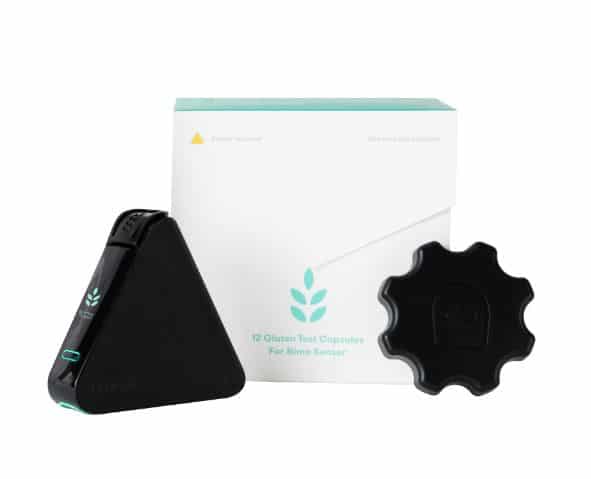This is the second of a two-part series about my experience at the 2018 scientific meeting of the American College of Gastroenterology (ACG). You can find the first article Is It Time To Rename Functional Gastrointestinal Disorders? here.
In my first piece on the ACG meeting, I wrote about my interview with the Australian gastroenterologist, Dr. Nicholas Talley. Anyone interested in irritable bowel syndrome (IBS) and other functional gastrointestinal disorders should make a point of keeping up with Dr. Talley‘s research.
This article will focus on some of the other interesting presentations I attended at the conference.
Another Use for the Low FODMAP Diet
As most of you probably know, the low FODMAP diet was originally developed as a dietary treatment for IBS by researchers at Monash University, in Melbourne Australia.
More recently, the American Gastroenterological Association (AGA) approved the diet for a number of other conditions, including small intestinal bacterial overgrowth (SIBO) and non-celiac gluten sensitivity (NCGS).
Not included on the AGA list (but perhaps soon to be) was fecal incontinence (FI), a common condition in which individuals—often the elderly—accidentally release solid or liquid stool or mucus. Management of FI typically involves drugs, exercises to strengthen pelvic floor muscles, and in extreme cases, surgery.
Dietary changes that help reduce diarrhea are also often recommended, which is why researchers at the University of Michigan at Ann Arbor decided to investigate the low FODMAP diet as a potential treatment for FI. Dr. Stacy B. Menees presented their research at the ACG meeting.
In a nutshell, Dr. Menees and her colleagues found that of the 65 patients included in the study (all of whom had been instructed in the diet) approximately two-thirds experienced an improvement in their symptoms. More specifically, about 88 percent of the responders reported a greater than 50 percent reduction in symptoms, and nearly 36 percent reported complete remission of their FI.
Dr. Menees stressed that the efficacy of the diet had to do with its ability to alter the consistency of loose stool and would not, therefore, be an effective intervention for those with FI and solid stool. She also said that the biggest dietary triggers were onion and garlic, which probably comes as no surprise to veteran FODMAPers!
A Test for IBS, Finally (but with a Caveat)
It’s called ibs smart™, and it’s the brainchild of Dr. Mark Pimentel—whose work is undoubtedly very familiar to a lot of people who either have IBS or who treat those with this gut disorder.
Dr. Pimentel, along with his colleagues at Cedars-Sinai Medical Center in LA and Gemelli Biotech, developed ibs smart™ as a way to accurately diagnose IBS (a positive result means that you have a greater than 90 percent chance of having the condition), thereby eliminating the extensive, expensive, and emotionally taxing work-ups typically used today.
This is incredibly important because it currently takes an average of more than six years from the onset of symptoms for people to learn what’s causing their digestive distress; in fact, I’ve worked with many adult clients who say their symptoms began in childhood.

How ibs smart™ Works
At the ACG meeting, Dr. Pimentel explained that ibs smart™ works by identifying elevated blood levels of two antibodies, anti-CdtB and anti-viniculin, in people who develop IBS after an episode of acute bacterial gastroenteritis or food poisoning.
Even mild cases of food poisoning can trigger this “post-infectious IBS,” according to Dr. Pimentel, so it’s not uncommon for people to miss the connection.
Before you get too excited, I have to tell you that ibs smart™ is only valid for diarrhea-predominant and mixed-type IBS (IBS-D and IBS-M); it cannot be used for constipation-predominant IBS (IBS-C).
I didn’t have a chance to ask Dr. Pimentel if he was working on a test for IBS-C, but I sure hope it’s on his “to-do” list.
Gluten in Restaurant Food
Many of my clients with celiac disease tell me that they’re skeptical about the gluten-free options available in some of the restaurants they frequent. Unfortunately, their suspicions are more than justified, according to Dr. Benjamin Lerner and his colleagues at Columbia University.
Dr. Lerner, who presented their research at the ACG meeting, said that of the 4,732 “gluten-free” restaurant foods they evaluated, one-third contained potentially dangerous amounts of the molecule. Pizza, pasta, and foods served later in the day were the biggest offenders, while breakfast foods were the least likely to be contaminated.
Foods from western states fared better than those from northeastern states (weird, huh?), and fast casual restaurants did better than casual and quick service types.
I have to admit that I wasn’t particularly surprised by these findings, but I stuck with the presentation because I was interested in learning more about how the “crowd-sourced data” was collected.
Turns out, it came from 804 people who each used a specific portable gluten sensor to test foods purchased at restaurants across the United States. In other words, researchers affiliated with Columbia’s University’s esteemed Celiac Center were taking seriously one of those devices I’d dismissed out of hand as a gimmick!
When I got home, I opened up the website for Nima, the machine used by the participants in the study. Here’s what I found:
- Nima’s test capsules only accept samples that are approximately pea-sized, which means that if you test only one part of a dish or product you may miss gluten elsewhere. Considering the cost of each capsule—five to six dollars, depending on your choice of delivery method—this can get pretty expensive pretty quickly.
- Most solids and liquids can be tested, with the exception of fermented foods, alcohol, pure xanthan and guar gums, and the meal replacement product, Soylent (who thought to test this?!).
- The manufacturers of Nima claim that it’s approximately 97 percent accurate at detecting gluten at levels of 20 ppm and above (20 ppm is the FDA’s cut-off for use of the gluten-free label).
- Results are generated in about three minutes and are either positive or negative. This is fine for people with celiac disease, who must avoid even tiny amounts of the protein, but quantification would be helpful for people with non-celiac gluten sensitivity, who may be able to tolerate levels greater than 20 ppm.
Since I have not had first-hand experience with Nima, I’d like to invite FODMAP Everyday® readers to let us know about their experience with this device or other gluten sensors.
Have you tested their accuracy on foods that you know contain gluten?
If you’ve used them in restaurants, have you shared the results with management (the Columbia researchers did not)?
I’m very curious, and I bet your fellow readers are as well.










